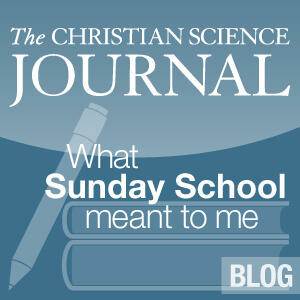Shortly after I became a member of a Christian Science branch church, I went through Primary class instruction, and, as a result, I was soon asked to teach Sunday School. Frankly, since I did not think of myself as a teacher, I had no idea how to approach that assignment, so I did what we all do when we need answers: I prayed.
Over and over I asked, “Father, show me how to teach. How can I teach Sunday School, having never taught?” The answer didn’t come right away, but one day this is what I heard: “The Bible is a trinity of instruction.” The three “subjects” are “geography and history,” “divine demands,” and “divine promises.” In other words, the Bible tells us what we must do, and then it tells us what we can expect from God.
From that first day as a teacher and for the next ten years I taught my students to look for the divine demands and divine promises in the Christian Science Bible Lesson, as instructed by the Church Manual by Mary Baker Eddy, which provides guidance for Sunday School classes. One way Sunday School lessons may be structured is by exploring “questions and answers as … may be found in the Christian Science Quarterly Lessons …” (p. 63)—and that’s what we did.
More recently, I’ve begun not only looking for the divine demands and divine promises in the Bible and Science and Health with Key to the Scriptures, by Mary Baker Eddy, but also asking myself: “Just how does Christian Science heal, and exactly what is the Science of it?” Finding the answers to these two questions has made it easier for me to explain and share Christian Science with others.
To take just one example, this passage from Science and Health offers specific instruction as to how Christian Science heals: “Ye who can discern the face of the sky,—the sign material,—how much more should ye discern the sign mental, and compass the destruction of sin and sickness by overcoming the thoughts which produce them, and by understanding the spiritual idea which corrects and destroys them” (p. 233). Thirty-six pages later, we have a splendid answer to the other question: What is the Science of our study? Mrs. Eddy writes: “Metaphysics resolves things into thoughts, and exchanges the objects of sense for the ideas of Soul. These ideas are perfectly real and tangible to spiritual consciousness, and they have this advantage over the objects and thoughts of material sense,—they are good and eternal” (p. 269).
A student whom I had in class when he was in the third grade phoned me one day 20 or more years later. He wanted to know how to reach an artist member of my family, as the magazine he represented wanted to publish an article about him. When we finished talking I asked him, “Do you still remember the rule we followed in our Sunday School class?” He said he did, and that he still looked for the divine demands and the divine promises in every Lesson. I added: “If one follows the demand, one can expect the promise.” He agreed. This was a small example to me of how Sunday School helps cultivate our innate spirituality, which Mrs. Eddy described as “the good soil wherein the seed of Truth springs up and bears much fruit” (Science and Health, pp. 270–271).
Teaching Sunday School classes led me to this approach to study, and now I can hardly wait for each Monday to come so I can study the next new Bible Lesson. I’m finding answers to my questions, praying to fulfill God’s demands, and expecting His promises. I find that they never fail. I am renewed, redeemed, and completely overjoyed!




